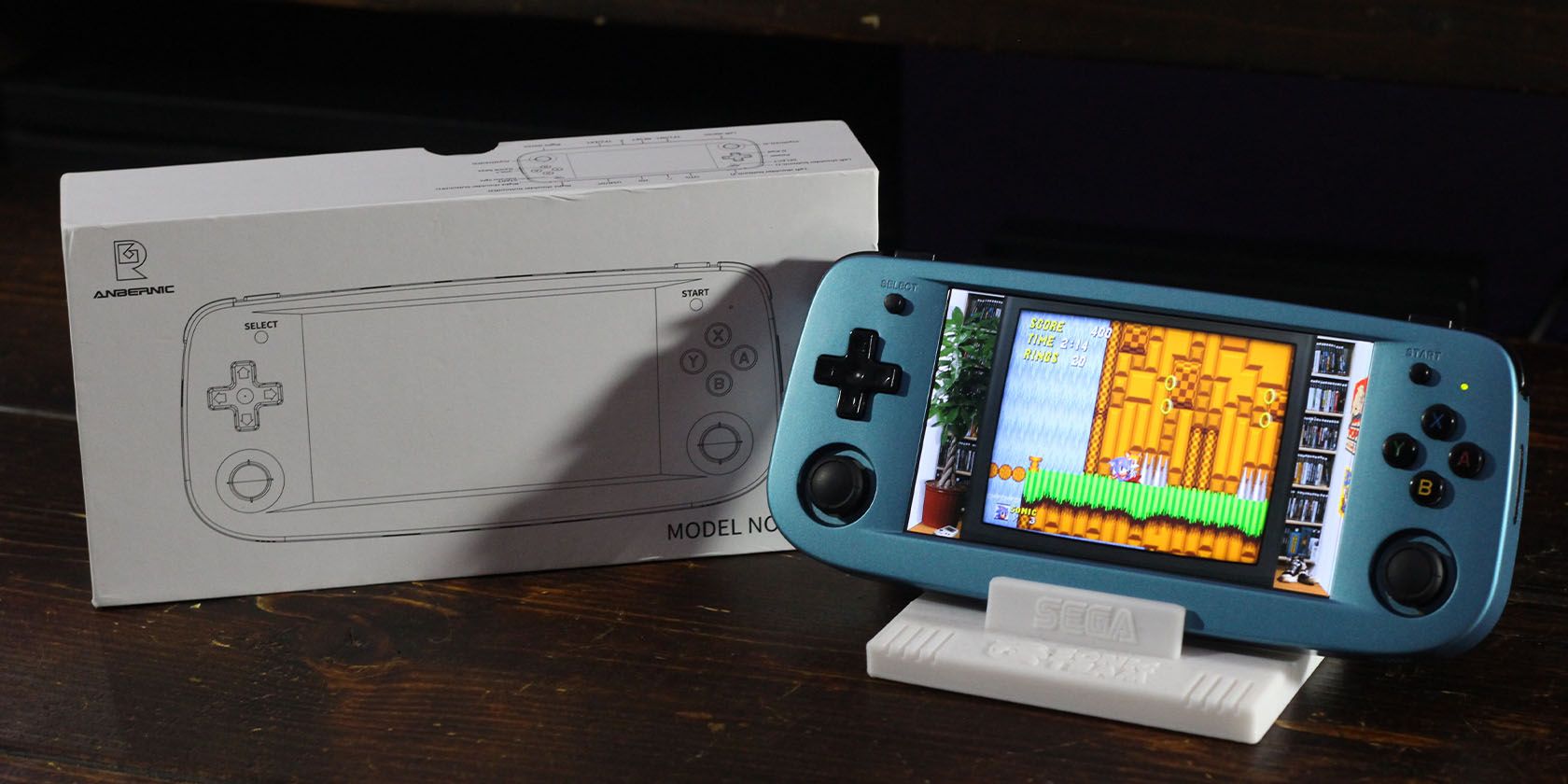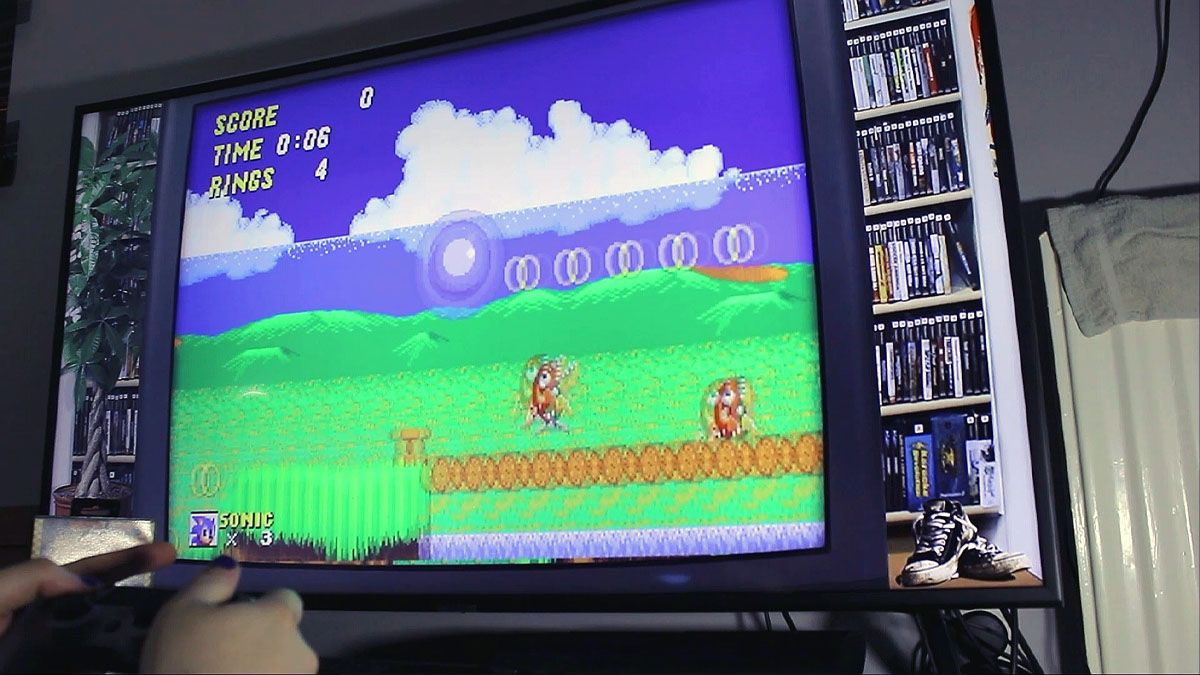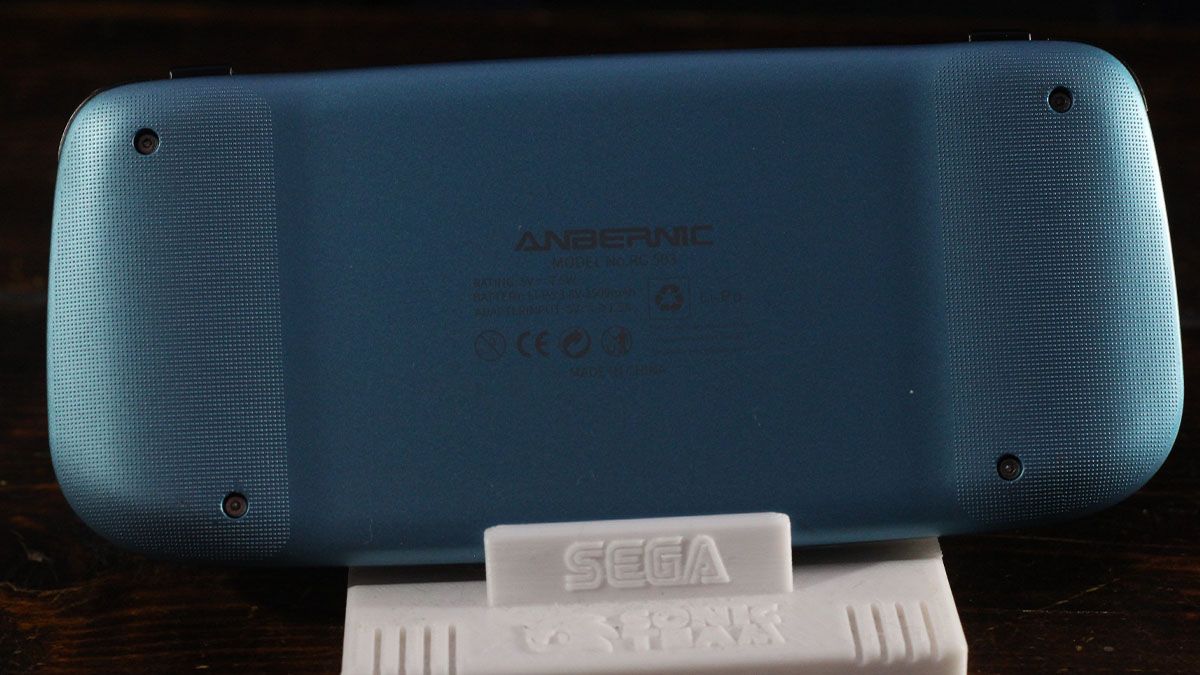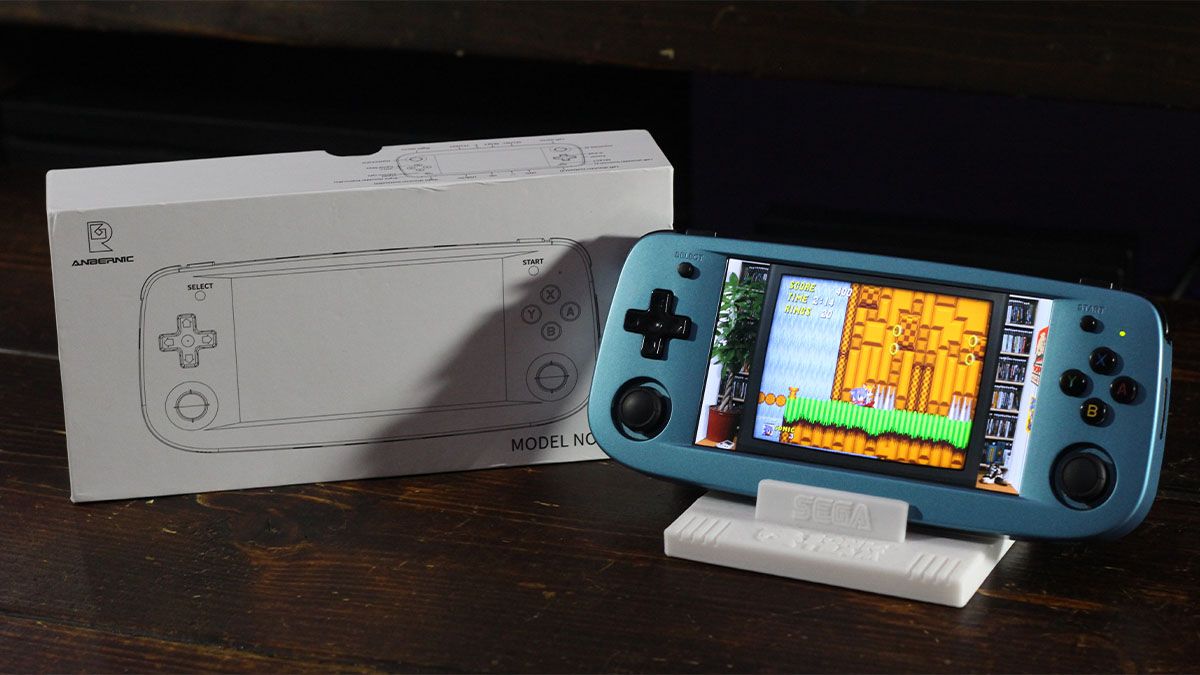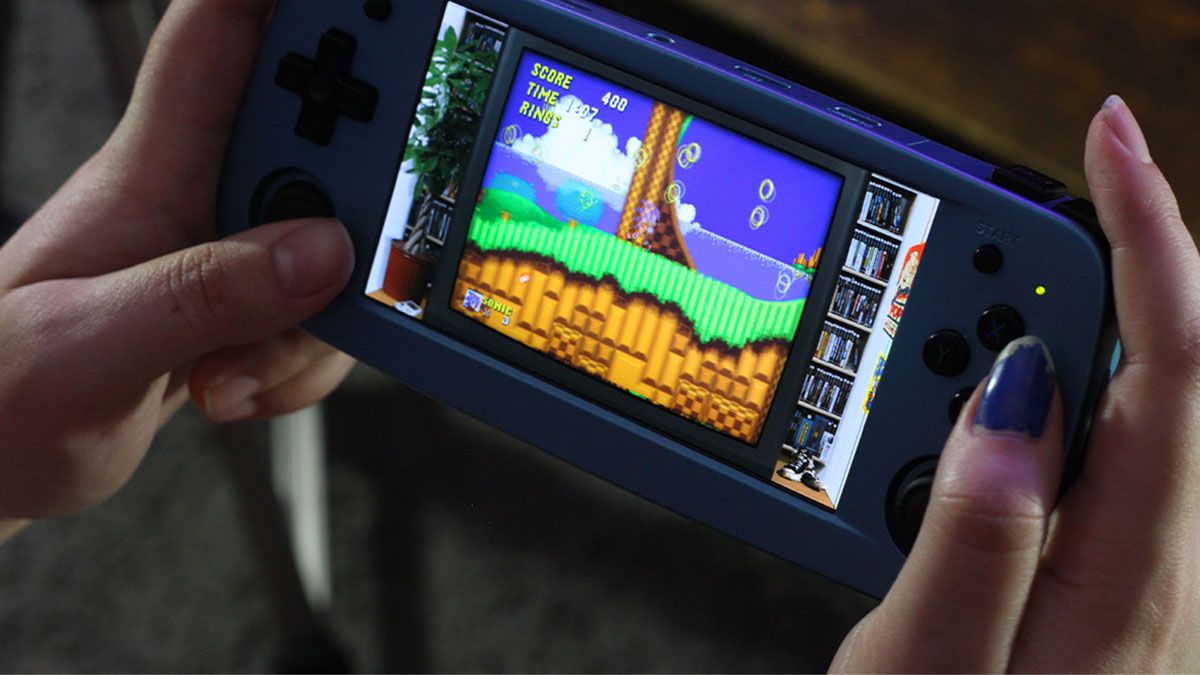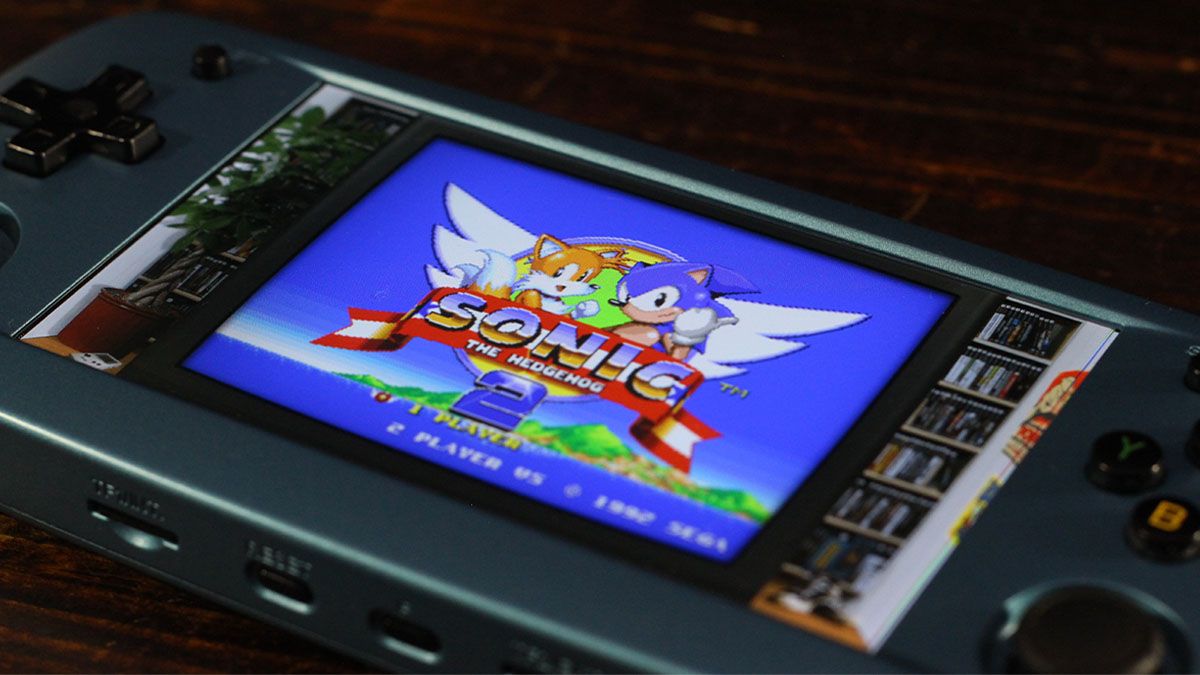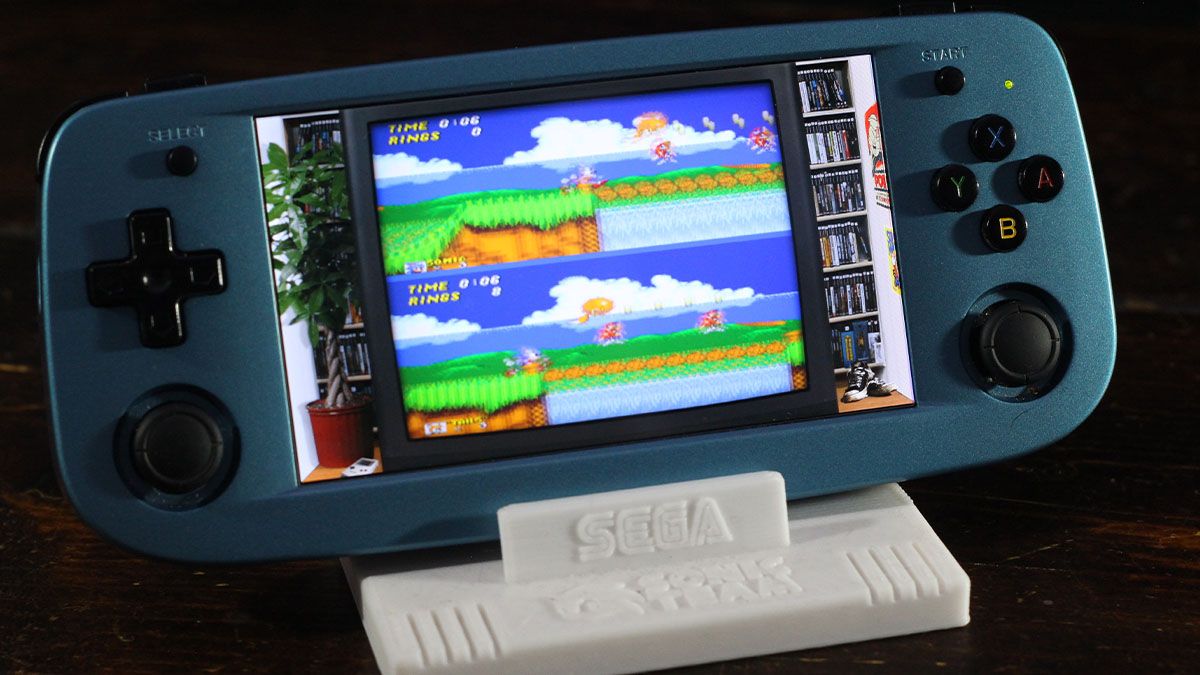Anbernic TG503 Handheld Console
The Anbernic RG503 manages to pull off some impressive feats for a budget handheld. It's packed with enough extra features to compensate for the lack of Android and is rocking a beautiful Samsung OLED screen with decent battery life. The only slight problems you could have would be the poor PSP performance and the lack of an ability to connect through USB for internal file tomfoolery, but neither of these are deal breakers.
- Bright OLED Screen
- Wide retro-game support, up to and including Dreamcast
- Storage: 16GB system + 64GB expansion microSD cards
- Portable: Yes
- Battery: 3500 mAh
- Multiplayer Support: Yes
- Connectivity: 5 Ghz Wi-Fi, Bluetooth, HDMI-C
- Brand: Anbernic
- Cartridge Bay: No
- Display: 4.95-inch OLED
- Resolution: 960 × 644
- Weight: 15.2 ounces
- Incredibly easy to set up and use
- Great feeling handheld for the price
- Handles a decent range of consoles
- Kodi, Netplay, and Retroachievements support
- Volume levels can behave strangely with Kodi
- No apparent way to connect via USB for file transfer
Retro gaming on the go is big business these days. Spurned on by classic console re-releases and the prevalence of Raspberry Pi-based retro systems, budget retro handhelds like the Anbernic RG503 have become a common sight. The RG503, available for just $120 from Hekka.com (use the code hekkarg503 for a $30 discount; the code can also be used to purchase in the UK for £100), is the first retro handheld to feature an OLED screen and a generally high build quality at this price point. Does that mean this is the best budget retro handheld on the market today?
The Anbernic RG503: Stats and Usability
The Anbernic RG503 is a budget-retro handheld from the mighty team over at Anbernic. While the RG503 is one of the cheaper offerings in the product line, it’s not exactly light on features. It rocks a Samsung 4.95-inch color OLED screen, an RK3566 Quad-Core 1.8Ghz CPU, and a 3500mAh battery that will keep the system gaming for up to six hours. It also includes two memory cards: a 16GB system card, and a 64GB expansion card that comes preloaded with a bunch of games.
One of the most important aspects of any retro handheld is usability. With many early products like the RetroStone, issues would arise due to the lack of custom OS. Many of these “do-it-yourself” devices had problems with stability, often crashing and requiring re-installation before they could be used again. This has not been a problem with the RG503 our entire time using it. The custom operating system is a Linux-based clone of Emulation Station, albeit without ES's high level of customizability. You lose out on the ability to boot into Debian, but it’s a fair trade-off for just being able to shove your backups on the device and start playing almost immediately.
About the Custom OS
It comes with a pre-installed custom OS and a bunch of games, and you also get a nice screen protector to ensure that the fancy OLED is kept safe. Beyond that, things couldn’t be simpler. You can take both memory cards out and connect them to a computer to add your ROMs; most folders are simply named. It’s not hard to either download a backup of a game you want to play or copy your discs and cartridges so that you can enjoy them on the go.
While usability is an important part of the Anbernic RG503, it’s not paramount. This device's biggest and most important aspect to get right is performance. Technically, you can play everything from the Atari 2600 to the Sega Dreamcast and even DS and PSP titles. How well some of these ROMs may work is the only real question. Dreamcast emulation on a device rocking only a single gig of RAM isn’t going to be perfect. Still, it’s mostly playable in the games we've been able to try, like Soldiers of Fortune and Sonic Adventure. Yes, the frame rate occasionally chugs, but that’s a fair trade-off for being able to play these games portably for this price.
Anbernic RG503: Mostly Masterful Emulation
Other systems work fine, but that’s not much of a shock. We’ve had most emulation standards down for quite a while at this stage. The only system where things get a bit interesting is with the PSP and N64. The PSP just runs a little slowly, but you can get it running a bit better by messing with PPSSPP settings. N64 emulation has the same problems that most N64 emulation has in that it can glitch and crash often. The PSP slowdown is a bit of a shame since the PSP is also a great emulation device that, unsurprisingly, doesn’t struggle to play PSP games at all.
These slight issues aside, that’s pretty much all there is to say about the Anbernic RG503 from a pure emulation perspective. Luckily, emulation isn’t eh only thing that this device does. There are a plethora of interesting additional features that are certainly worth noting.
Firstly, you get access to a mini-HDMI port that you can use to connect to any HDMI-compatible device. This works great and can be easily switched by simply restarting the device with an HDMI cable attached. At this point, it becomes like a console, and you can even attack Bluetooth controllers and play with your friends like you’re running a real retro system, albeit with crisper graphics. It should be made clear that any border you see in images of the device is optional. By default, games are stretched, but you can also have them appear with black borders or various images to fill in the gaps.
The Bells and Whistles of Connectivity
Going back to connectivity, you’ll also be pleased to hear that the Anbernic RG503 includes a 5Ghz Wi-Fi card. It’s a real treat to scrape game data from various sources without buying anything additional or connecting through an Ethernet port like with some devices. Retro Achievements integration allows you to earn achievements on your older games, and Netplay compatibility lets you play your retro games online against others without having to do too much tinkering.
One of the most useful features for PC gamers on this device is the inclusion of Moonlight Game Streaming. This service allows you to stream PC games to the Anbernic, utilizing the 5GHz Wi-Fi card inside for high performance. Not only does this massively increase the number of games you can play on the device, but it also makes up for the lack of Android due to the RAM limitations. If you know what you’re doing, you can use services like Stadia or Amazon Luna.
Movies on the Go
The final interesting feature of the device is the inclusion of the Kodi Media Center. You can add as many videos or movies as possible and turn the device into a portable video player. With the HDMI and ability to connect Bluetooth controllers, you can essentially just carry your personal media library around and turn it into a video player with remote control functionality to boot. The only slight weirdness with Kodi is that you have to make sure you turn the volume up to full in the main area, or you won’t hear anything in Kodi for some reason.
So far, there haven't been many complaints about the Anbernic RG503, but a few minor niggles should be pointed out.
One of these slight niggles is how you connect the device to your PC. There doesn't seem to be a way to connect the device directly through USB, with all file transfers happening through memory cards directly. That’s not a huge issue, but it’s also a shame. It would have been nice to tinker with the internal files more easily.
The only other real issue is the strangeness mentioned above with Kodi, which made it difficult to use over HDMI on occasion.
Should You Buy the Anbernic RG503?
With all that said, is the Anbernic RG503 a practically perfect product if all it has are minor problems? Well, sort of, yes. While it’s far from perfect on a technical level, it is incredibly well suited to what it is trying to be. This is undoubtedly the best you'll find if you’re in the market for a high-quality but low-cost retro handheld. It retails for around £130 or $150 (use the code hekkarg503 to get $30 off!), and it’s probably the only OLED-screen device in that price range. On top of that, it has enough extras and cool features to make it well worth that money, and you can certainly spend lots more on considerably worse products.

